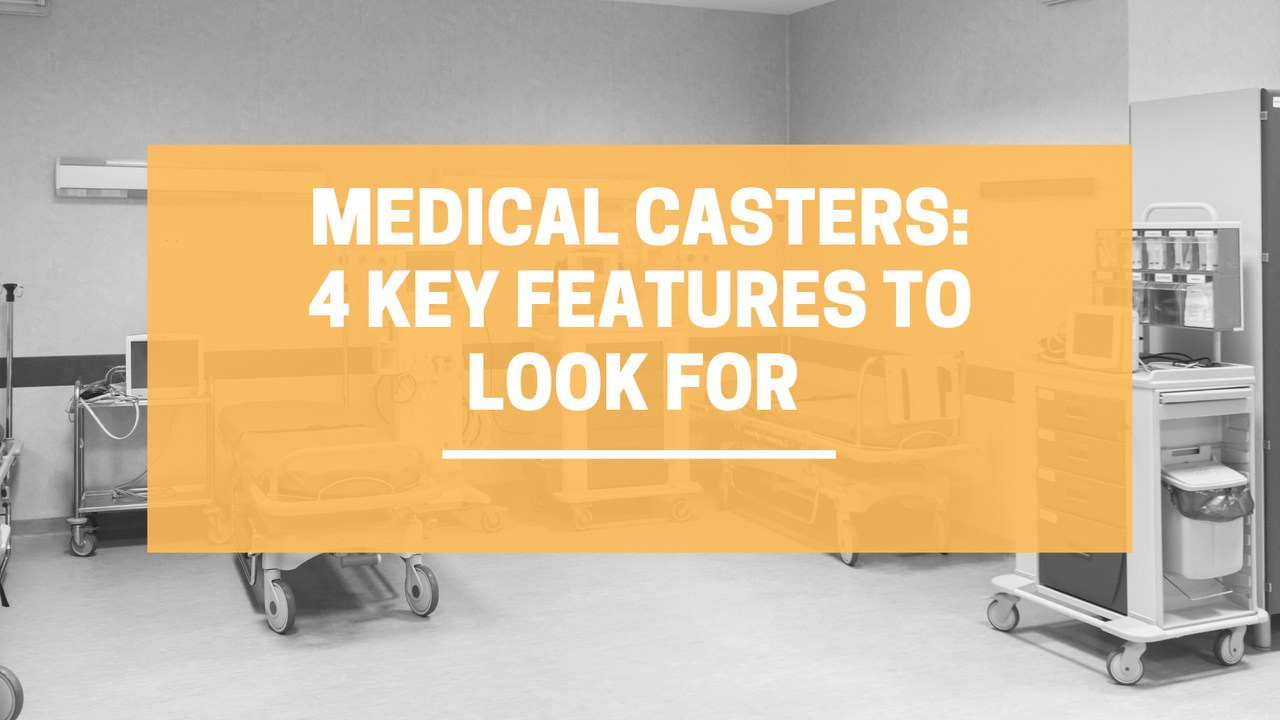4 Features to Look for in Medical Equipment Casters
A busy medical center is constantly on the move and from every critical patient that is brought in to any imaging that is conducted, casters play their part. They are the backbone of any in-center movement involving equipment such as stretchers, wheelchairs, mobile X-ray machines, and critical care carts among others. However, it can be said that casters don’t get the recognition they deserve. In fact, let me say that a bad caster gets more attention than a good one.
Considering the critical nature of their job in medical equipment, you can’t go with just any casters. You need casters that are made for the job. Therefore, do give casters due consideration, whether you are buying new medical equipment, or are replacing the existing casters on any piece of equipment.
The next logical question can be what you should look for in casters to be used in the healthcare industry. This is where we can help. In this piece, we will go over four of the must-have features in medical equipment casters. So, without further ado let’s get right into it.
1. Durability
Just like in most things, durability is a feature you can’t ignore in casters. And in medical equipment, this feature becomes even more critical as it makes them dependable. The durability of casters is directly related to their material of construction. In casters, you have wheels, axles, forks, and brakes and generally, wheels are made up of different material than the rest of the caster.
In wheels, you will find materials such as metal, polyurethane, rubber, and plastic among others. As you can guess, these materials have different characteristics and all of them have their fair share of pros and cons. In metal, you will find wheels made up of steel and cast iron. These wheels have great weight capacity and tensile strength along with resistance to heat and general wear and tear. However, they are mostly heavy in weight, are noisy, and don’t provide the best floor protection.
For use in the healthcare industry, it is better to go with caster wheels made up of either rubber or polyurethane. These materials have good wear and abrasion resistance and provide better floor protection and above all have a quieter operation which makes them good for use in hospital settings.
In other parts of the caster like forks, axles, plates, and stems, you will find materials such as steel, cast iron, and plastic. These parts should have the much-needed structural strength that would make them last long and work efficiently. For these parts, it is better to go with steel as it has good strength and durability. However, make sure it has some sort of coating to protect against rust and corrosion. Some of the finishes you can easily find include zinc plating, chrome plating, and nickel plating.
2. Noise Reduction
In the healthcare industry, patient comfort is of utmost importance. In such settings, the clunk and clatter of casters can be a nuisance and can adversely affect patient comfort. Moreover, they can also disturb hospital workers including doctors and nurses, and make them lose their focus. Therefore, you should go with casters that don’t produce much noise during their operation.
For this purpose, we recommend that medical centers should go with softer tread wheels. In addition to lower noise levels, these casters cause minimal damage to the floor. Soft polyurethane treads are easier to move than plaster casters and are quieter than metal casters.
In other aspects, go for materials that grip the floor and reduce caster chatter. This usually occurs when the load capacity is low and as a result, there is back and forth swinging of the rig. For this attribute, go for materials such as urethane and neoprene.
These materials are also good at keeping your floors scratch-free as they are non-marking.
3. Shock Loading Reduction
In simple terms, shock loading means when there is a sudden increase in load. For example, when the load is placed from a height to another surface and there is an uneven distribution of load. Some of the machines used in the healthcare industry are sensitive to such shocks as this can damage them. Therefore, for transfers of such machines, you need casters that can reduce/eliminate the effects of such shocks.
Therefore, look for carts or racks that provide good shock loading reduction. They usually have spring-loaded casters and this helps them reduce the shock experienced by sensitive machinery.
4. Good Braking and Locking Mechanism
Having a good braking and locking mechanism is another of the must-have features for medical casters. This will help keep any equipment in place when some sort of procedure is going on. Be it IV poles, anesthesia carts, or even hospital linen carts, you only need them to move when you want them to. Otherwise, any uncontrolled/unwanted movement can have serious consequences.
In casters, you are mostly going to find ideal-stop brake, total lock brake, or tech lock brake mechanisms. All of them have different working mechanisms and are effective at controlling caster movement. However, for medical equipment, we recommend casters with total lock brakes. These brakes lock both the caster swivel and wheel rotation. So, essentially, you are taking care of both the swivel and rotation of the casters and you don’t have to worry about having several locking mechanisms.
At Linco, we have a wide range of casters for the healthcare industry from top manufacturers . Be sure to see our selection of medical equipment casters available.

